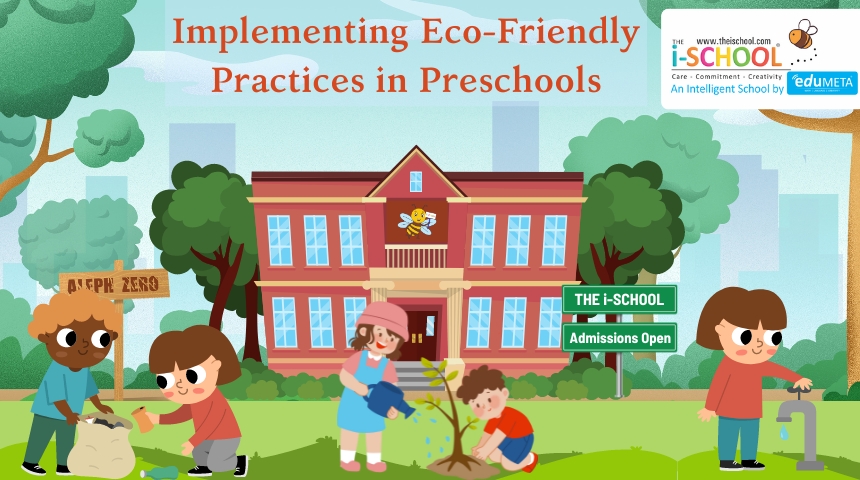Implementing Eco-Friendly Practices in Preschools

As the world becomes more conscious of environmental issues, it’s essential to instill eco-friendly habits in children from a young age. Implementing eco-friendly practices in preschools not only helps the planet but also teaches young children the importance of sustainability. Here’s how preschools can adopt green practices and make a significant impact.
1. Reduce, Reuse, Recycle
Teaching the Basics: Introducing the concept of “reduce, reuse, recycle” to preschoolers can be both educational and fun. Simple activities like sorting recyclables, using reusable containers, and crafting with recycled materials can help children understand the importance of waste management.
Classroom Activities:
- Sorting Games: Have bins labeled for paper, plastic, and metal, and let children practice sorting items into the correct bins.
- Craft Projects: Use old newspapers, magazines, and cardboard for art projects, encouraging creativity while recycling.
2. Energy Conservation
Classroom Energy Use: Teaching children about conserving energy can start with small steps in the classroom. Turn off lights when not in use, use natural light whenever possible, and incorporate energy-saving devices.
Interactive Lessons:
- Light Patrol: Assign a student to be in charge of turning off lights when the class leaves the room.
- Energy-Saving Talks: Discuss with children how saving electricity helps the planet and brainstorm ways to save energy at school and home.
3. Eco-Friendly Supplies
Green Materials: Opt for eco-friendly, non-toxic supplies for crafts and learning activities. Use recycled paper, plant-based crayons, and washable markers to minimize environmental impact.
Sustainable Choices:
- Reusable Items: Encourage the use of reusable water bottles and lunch containers instead of disposable ones.
- Natural Materials: Incorporate natural materials like wood, clay, and fabric scraps into learning and play.
4. Gardening and Nature Activities
Hands-On Learning: Gardening is an excellent way to teach children about nature, responsibility, and where food comes from. Create a small garden where children can plant, water, and watch their plants grow.
Engaging Activities:
- Planting Seeds: Let each child plant their own seed and take care of it, teaching patience and care.
- Nature Walks: Organize regular nature walks to collect leaves, observe insects, and learn about local flora and fauna.
5. Sustainable Classroom Environment
Eco-Friendly Classroom Design: Create a classroom environment that promotes sustainability. Use energy-efficient lighting, non-toxic cleaning supplies, and sustainable furniture made from recycled materials.
Green Initiatives:
- Composting: Start a compost bin for food scraps from snacks and lunches, teaching children about composting and soil health.
- Eco-Friendly Decorations: Use plants to decorate the classroom, improving air quality and teaching children about plant care.
6. Environmental Education
Curriculum Integration: Integrate environmental education into the daily curriculum. Include stories, songs, and activities that focus on nature, animals, and the environment.
Educational Resources:
- Books and Media: Use age-appropriate books and videos that explain environmental concepts in simple terms.
- Guest Speakers: Invite local environmentalists or farmers to speak to the children about their work and the importance of caring for the planet.
Conclusion
Implementing eco-friendly practices in preschools is a crucial step towards a sustainable future. By teaching children the importance of environmental responsibility from a young age, we can foster a generation that values and protects our planet. These practices not only benefit the environment but also enrich the educational experience, making learning fun and impactful.
Adopting these green practices in preschools can make a significant difference. Start small, involve the children in every step, and watch as they grow into environmentally conscious individuals.
